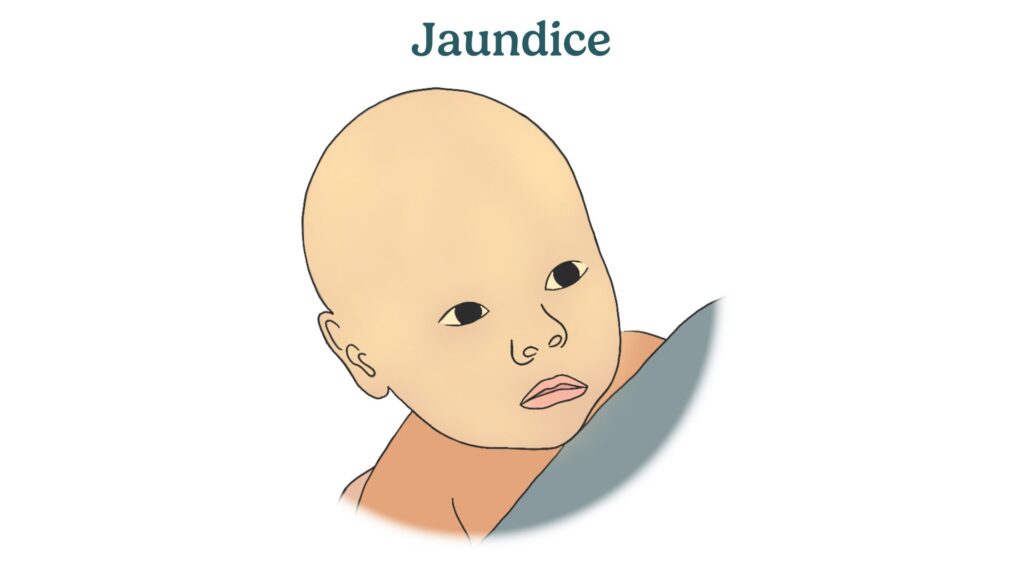jaundice

Jaundice
Jaundice is a common condition in newborns where the skin and the whites of the eyes take on a yellowish color. This occurs due to high levels of bilirubin, a yellow pigment produced during the normal breakdown of red blood cells.
While mild jaundice is typically harmless and resolves on its own, severe jaundice requires medical attention to prevent complications.
What to watch out for
It’s important to recognize the signs of jaundice and understand how to manage it. Here are some indicators and tips:
- Yellowing of the skin and eyes: The most obvious sign of jaundice is the yellowing of your baby's skin and the whites of their eyes. It usually starts on the face and moves down the body.
- Poor feeding: Babies with jaundice may be lethargic and have trouble feeding.
- Dark urine and pale stools: Dark yellow urine and pale or light-colored stools can be signs of jaundice.
To manage jaundice, consider these tips:
- Frequent feeding: Breastfeed your baby frequently to help lower bilirubin levels. Aim for 8-12 feedings per day.
- Monitor bilirubin levels: Your healthcare provider will monitor your baby’s bilirubin levels through blood tests.
- Phototherapy: For moderate to severe jaundice, phototherapy (light treatment) may be used to help break down bilirubin in your baby’s skin.
- Sunlight: Brief periods of indirect sunlight exposure can help reduce bilirubin levels, but always follow your healthcare provider's guidance on this.
If you notice signs of severe jaundice, such as extreme lethargy, poor feeding, or worsening yellowing, contact your healthcare provider immediately.
Physical limitations or health circumstances
Certain conditions can increase the likelihood of jaundice in newborns:
- Premature birth: Premature babies are more likely to develop jaundice because their livers are less developed and less efficient at processing bilirubin.
- Blood type incompatibility: If the mama’s blood type is different from the baby's, it can cause an increased breakdown of red blood cells, leading to higher bilirubin levels.
- Bruising during birth: Babies who experience bruising during birth may have higher bilirubin levels due to the breakdown of extra red blood cells.
- Breastfeeding difficulties: Babies who have trouble breastfeeding may not get enough milk, which can slow down the removal of bilirubin from the body.
If your baby is at higher risk for jaundice, work closely with your healthcare provider to monitor and manage the condition.
Other terms
Understanding related terms can help you better manage jaundice and related challenges:
- Bilirubin: A yellow pigment produced during the normal breakdown of red blood cells. High levels cause jaundice.
- Phototherapy: A treatment using special lights to break down bilirubin in the baby's skin.
- Bilirubin levels: The amount of bilirubin in the blood, monitored through blood tests to assess jaundice severity.
- Lethargy: A state of sluggishness or exhaustion, which can be a symptom of severe jaundice.
- Breastfeeding jaundice: Jaundice that occurs in breastfeeding infants due to inadequate milk intake or feeding difficulties.


